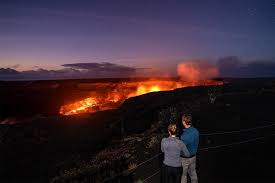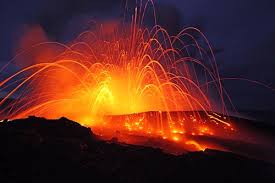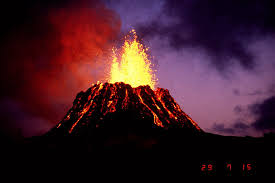
Exploring the Majestic Volcanoes of Hawaii: A Must-See for Tourists
Hawaii, known for its stunning landscapes and breathtaking beauty, is home to some of the world’s most captivating volcanoes. These majestic natural wonders attract tourists from all over the globe, eager to witness the raw power and beauty of Mother Nature in action. If you’re planning a trip to Hawaii, visiting a volcano should undoubtedly be on your itinerary.
One of the most famous volcanoes in Hawaii is Kilauea, located within the Hawaii Volcanoes National Park. This active shield volcano has been erupting continuously since 1983, making it one of the world’s most active volcanoes. As you approach Kilauea, you’ll be greeted by vast lava fields that showcase the ever-changing landscape shaped by ongoing volcanic activity.
The park offers various ways to explore Kilauea’s wonders. Hiking trails wind through lush rainforests and barren lava fields, allowing visitors to witness firsthand the dramatic transformation caused by volcanic eruptions. The Crater Rim Drive takes you on a scenic route around Kilauea’s summit caldera, offering panoramic views of steaming vents and other geological formations.
For those seeking an even more immersive experience, guided tours are available that provide expert insights into the geology and history of this mesmerizing volcano. Knowledgeable guides will lead you to hidden gems such as lava tubes—cavernous tunnels formed by flowing lava—and explain how these geological marvels came to be.
Another must-see volcano in Hawaii is Mauna Loa, one of Earth’s largest shield volcanoes. Towering over 13,000 feet above sea level, Mauna Loa offers awe-inspiring views and unparalleled hiking opportunities. Adventurous souls can embark on multi-day treks across this massive volcano, traversing diverse landscapes from lush rainforests to barren lava fields.
While Mauna Loa is currently dormant, its immense size and historical eruptions make it a fascinating destination for volcano enthusiasts. Visitors can learn about the volcano’s past eruptions at the Mauna Loa Observatory, which monitors volcanic activity and provides valuable scientific data.
It’s important to note that visiting volcanoes requires caution and respect for the natural environment. Volcanic landscapes can be unpredictable, and it’s crucial to follow safety guidelines provided by park authorities or tour operators. Additionally, volcanic emissions such as sulfur dioxide may affect air quality in certain areas, so it’s advisable to check for any advisories before planning your visit.
Exploring the volcanoes of Hawaii is not only an opportunity to witness nature’s power but also a chance to gain a deeper understanding of the geological forces that have shaped these islands over millions of years. It’s an experience that will leave you in awe and appreciation of Earth’s incredible natural wonders.
So, if you’re ready for an adventure like no other, make sure to include a visit to one of Hawaii’s iconic volcanoes on your travel bucket list. Prepare to be captivated by their beauty, inspired by their stories, and forever changed by the experience of standing on the edge of these majestic forces of nature.
Frequently Asked Questions: Exploring Volcanoes in Hawaii
- What is the best time to visit a volcano in Hawaii?
- Are there any safety precautions I should take when visiting a volcano in Hawaii?
- How can I get to a volcano in Hawaii?
- Where are the most popular volcanoes to visit in Hawaii?
- What kind of activities can I do at a volcano in Hawaii?
- Is it possible to hike on an active volcano in Hawaii?
What is the best time to visit a volcano in Hawaii?
The best time to visit a volcano in Hawaii depends on various factors, including weather conditions, volcanic activity, and personal preferences. Here are some considerations to keep in mind:
- Weather: Hawaii’s climate is generally warm and pleasant throughout the year. However, it’s important to note that certain months may bring more rainfall or higher temperatures. The summer months (June to September) tend to be drier and warmer, while the winter months (December to February) can be slightly cooler with increased chances of rain.
- Volcanic Activity: Monitoring volcanic activity is crucial when planning a visit to a volcano in Hawaii. The Hawaii Volcanoes National Park provides regular updates on volcanic conditions and any safety advisories. It’s advisable to check their website or consult with local authorities for the most up-to-date information before planning your trip.
- Crowds: Popular tourist destinations like volcanoes in Hawaii can experience higher visitor numbers during peak travel seasons. If you prefer fewer crowds and a more serene experience, consider visiting during the shoulder seasons (spring or fall) when tourism tends to be slightly quieter.
- Personal Preferences: Consider your own preferences when choosing the best time to visit a volcano. Some people may enjoy witnessing lava flows during periods of heightened volcanic activity, while others may prefer exploring the natural beauty of dormant volcanoes under calmer conditions.
Ultimately, there isn’t a definitive “best” time as each season offers its own unique experiences and advantages. It’s recommended to research current conditions and consult with local experts or tour operators who can provide insights based on real-time information before finalizing your travel plans.
Are there any safety precautions I should take when visiting a volcano in Hawaii?
When visiting a volcano in Hawaii, it’s important to prioritize your safety and follow the guidelines provided by park authorities or tour operators. Here are some safety precautions to keep in mind:
- Stay informed: Before visiting a volcano, check for any advisories or warnings issued by park authorities or local authorities. Stay updated on the current volcanic activity, air quality conditions, and any closures or restrictions in place.
- Follow designated paths and trails: Stick to marked paths and trails when exploring volcanic areas. Venturing off into unauthorized areas can be dangerous due to unstable ground, hidden hazards, or potential gas emissions.
- Dress appropriately: Wear sturdy footwear and dress in layers suitable for the outdoor conditions. Volcanic landscapes can be rugged, rocky, and uneven, so it’s essential to have proper footwear that provides stability and protection.
- Protect yourself from volcanic emissions: Volcanoes release gases such as sulfur dioxide that can affect air quality in certain areas. If you have respiratory issues or are sensitive to these gases, consider wearing a mask or avoiding areas with poor air quality.
- Carry essentials: Bring essentials such as water, snacks, sunscreen, insect repellent, and a first aid kit during your visit. Volcanic environments can be remote with limited facilities available nearby.
- Respect barriers and warning signs: Observe all barriers and warning signs put in place by park authorities or tour operators. These are there for your safety and to protect sensitive natural features.
- Be cautious around lava flows: If you encounter active lava flows, maintain a safe distance as they can be extremely hot and unpredictable. Lava entering the ocean creates steam plumes that may contain hazardous particles.
- Stay hydrated: Hawaii’s tropical climate combined with physical activity can lead to dehydration quickly. Drink plenty of water throughout your visit to stay properly hydrated.
- Be aware of weather conditions: Check the weather forecast before heading out and be prepared for changing weather conditions. Hawaii’s volcanic areas can experience sudden rain showers or fog, which may affect visibility.
- Seek guidance from professionals: If you’re unsure about visiting a volcano on your own, consider joining a guided tour led by experienced professionals who are knowledgeable about the area and can provide safety instructions.
Remember, safety should always be your top priority when visiting volcanic areas. By following these precautions and using common sense, you can have a memorable and safe experience exploring the volcanoes of Hawaii.
How can I get to a volcano in Hawaii?
Getting to a volcano in Hawaii can be an exciting and memorable experience. Here are some options for reaching the volcanic areas:
- Hawaii Volcanoes National Park: To visit Kilauea, one of the most accessible volcanoes in Hawaii, you can fly into Hilo International Airport on the Big Island. From there, it’s approximately a 45-minute drive to the entrance of Hawaii Volcanoes National Park. Car rentals are available at the airport, or you can arrange for transportation through tour operators or shuttle services.
- Mauna Loa: To reach Mauna Loa, also located on the Big Island, you can follow a similar route as mentioned above for Kilauea. However, keep in mind that accessing certain parts of Mauna Loa may require permits or guided tours due to safety considerations and potential hazards.
- Helicopter Tours: For a unique and breathtaking perspective, consider taking a helicopter tour that offers aerial views of the volcanoes and their surrounding landscapes. Several companies provide helicopter tours departing from various locations in Hawaii, including Hilo and Kona.
- Guided Tours: Joining a guided tour is an excellent way to explore volcanoes safely while learning from knowledgeable guides. Many tour companies offer guided excursions to volcanic areas with transportation provided from major tourist hubs on different islands.
- Boat Tours (Lava Viewing): If lava is flowing into the ocean during your visit, you may have an opportunity to witness this incredible phenomenon by taking a boat tour along the coast. These tours depart from certain ports on the Big Island and provide a unique perspective on volcanic activity.
Remember that volcanic areas can be hazardous, so it’s essential to stay informed about current conditions before planning your visit. Check with local authorities or park rangers for any advisories or closures that may affect access to specific areas.
Lastly, ensure you come prepared with appropriate clothing and footwear for hiking or outdoor activities, as well as sunscreen, water, and snacks. Following safety guidelines and respecting the natural environment will ensure a safe and enjoyable visit to the volcanoes of Hawaii.
Where are the most popular volcanoes to visit in Hawaii?
Hawaii is home to several popular volcanoes that attract tourists from around the world. The two most well-known and frequently visited volcanoes are:
1. Kilauea: Located within the Hawaii Volcanoes National Park on the Big Island, Kilauea is one of the world’s most active volcanoes. It has been continuously erupting since 1983, making it a fascinating destination for volcano enthusiasts. Visitors can explore the park’s hiking trails, witness steaming vents and lava flows, and even take guided tours to learn more about Kilauea’s geological wonders.
2. Mauna Loa: As one of Earth’s largest shield volcanoes, Mauna Loa is an iconic landmark in Hawaii. While currently dormant, its immense size and historical eruptions make it a popular destination for hikers and nature lovers. With its diverse landscapes ranging from lush rainforests to barren lava fields, Mauna Loa offers breathtaking views and opportunities for multi-day treks.
These volcanoes provide unique experiences that allow visitors to witness the raw power of nature while gaining insights into the geological forces that have shaped Hawaii’s islands over millions of years. However, it’s important to stay informed about any safety guidelines or advisories issued by park authorities or tour operators before planning your visit.
What kind of activities can I do at a volcano in Hawaii?
Visiting a volcano in Hawaii offers a plethora of exciting activities for travelers seeking adventure and exploration. Here are some popular activities you can enjoy at a volcano:
- Hiking: Volcanoes provide excellent opportunities for hiking enthusiasts. Trails within volcanic landscapes take you through diverse terrain, from lush rainforests to hardened lava fields. You can explore craters, steam vents, and unique geological formations while immersing yourself in the natural beauty of the volcano.
- Scenic Drives: Many volcanoes in Hawaii offer scenic drives that allow you to witness the stunning landscapes from the comfort of your vehicle. Crater Rim Drive in Hawaii Volcanoes National Park, for example, provides breathtaking views of Kilauea’s summit caldera and surrounding areas.
- Lava Viewing: Witnessing flowing lava is an unforgettable experience. Depending on volcanic activity and safety conditions, you may have the opportunity to view active lava flows from designated viewing areas or take guided tours that bring you closer to these mesmerizing displays of nature’s power.
- Guided Tours: Joining a guided tour led by knowledgeable experts is an excellent way to learn about the geology, history, and cultural significance of the volcano. Guides provide valuable insights into volcanic activity, explain unique features of the landscape, and share captivating stories about the area.
- Volcano Observatory Visits: Some volcanoes have observatories where visitors can learn about ongoing research and monitoring efforts. These facilities offer exhibits on volcanology, seismology, and other related sciences, providing a deeper understanding of volcanic processes.
- Lava Tube Exploration: Lava tubes are natural tunnels formed by flowing lava during volcanic eruptions. Exploring these underground formations allows you to witness unique geological features such as stalactites and stalagmites formed over time.
- Photography Opportunities: The dramatic landscapes created by volcanoes make them ideal subjects for photography enthusiasts. Capture stunning vistas, volcanic craters, lava flows, and unique rock formations to create lasting memories of your volcano adventure.
- Cultural Experiences: Volcanoes hold immense cultural significance for the people of Hawaii. Engage in cultural activities such as attending traditional ceremonies, learning about ancient legends and myths associated with the volcano, or participating in workshops that teach traditional crafts and practices.
Remember to prioritize safety when engaging in volcano-related activities. Always follow park regulations, heed advice from local authorities or tour guides, and stay informed about current volcanic conditions. With proper precautions, visiting a volcano in Hawaii can be an awe-inspiring experience that connects you with the power and beauty of nature.
Is it possible to hike on an active volcano in Hawaii?
Hiking on an active volcano in Hawaii is possible, but it is important to note that access and safety regulations are subject to change based on the current volcanic activity. As of my last update, the Kilauea volcano in Hawaii Volcanoes National Park has been continuously erupting since 1983, making it one of the most active volcanoes in the world. While parts of the park have been closed due to ongoing volcanic activity, there are still opportunities for hiking and exploration.
The park offers a variety of hiking trails that allow visitors to witness the volcanic landscape up close. However, it is essential to check with park authorities or visit their official website for the most up-to-date information on trail conditions and closures. They provide valuable guidance regarding safety precautions and any potential hazards associated with volcanic activity.
It’s important to remember that hiking on an active volcano can be inherently risky due to unpredictable changes in volcanic conditions. Volcanic landscapes can be hazardous, with potential risks such as toxic gases, unstable terrain, and sudden eruptions. Therefore, it is crucial to follow all guidelines provided by park authorities and exercise caution at all times.
If you’re interested in experiencing a volcano hike but prefer a less active environment, there are dormant or less active volcanoes in Hawaii that offer hiking opportunities as well. For example, Mauna Loa is a massive shield volcano that has not erupted since 1984 but still provides breathtaking views and challenging hiking trails.
Remember, safety should always be your top priority when exploring any natural environment, especially those with active volcanic activity. Stay informed about current conditions, follow instructions from park officials or tour guides, and be prepared with proper gear and supplies for your hike.
Please ensure you check for any updates or advisories from relevant authorities before planning your visit to an active volcano in Hawaii.




